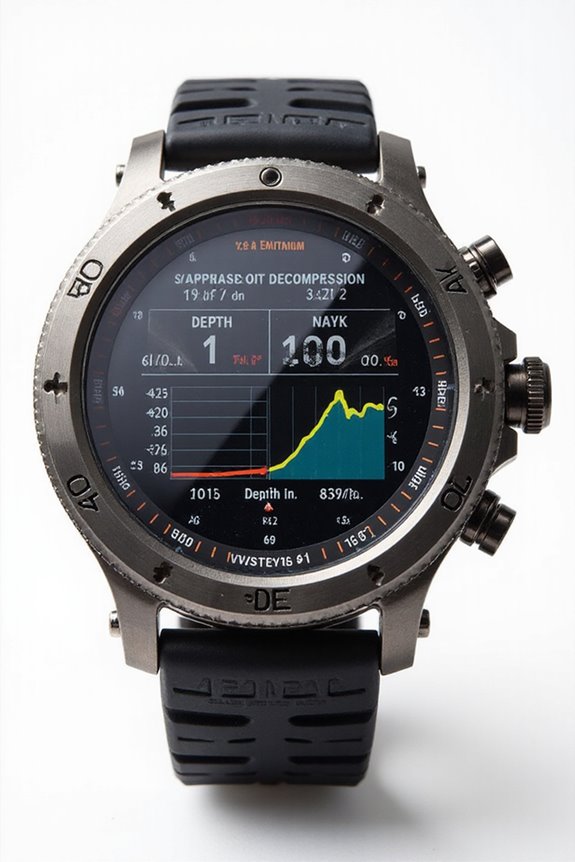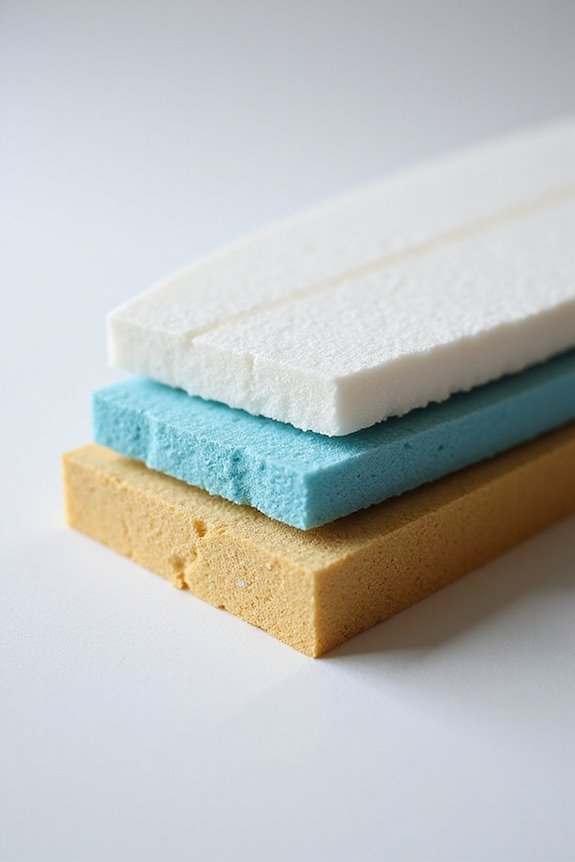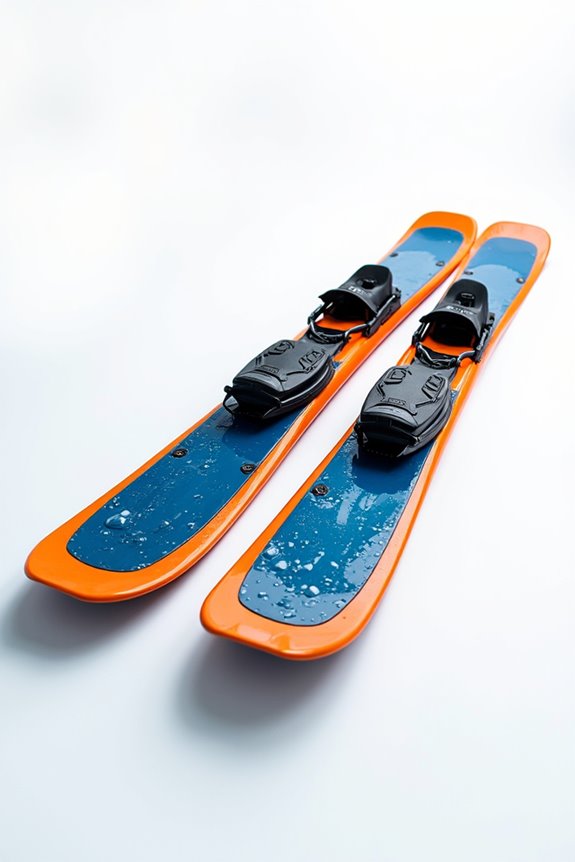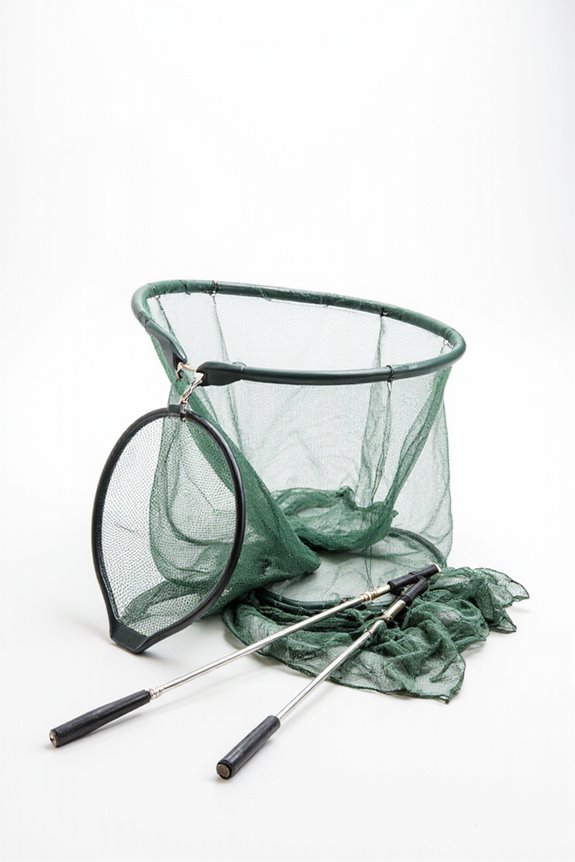So, how do dive computers keep us safe underwater? They use clever algorithms based on decompression theory, tracking how nitrogen and other gases saturate our body tissues at different depths. By constantly calculating no decompression limits and managing safe ascent rates with stops, they help avoid dangerous gas bubbles. Plus, they monitor factors like ascent speed and even hydration. It’s like having a vigilant dive buddy who never sleeps—you’ll want to know more about these lifesaving tech tricks.
Key Takeaways
- Dive computers continuously track depth, time, and gas mix to calculate safe decompression stops and ascent rates in real-time.
- They use decompression algorithms like Bühlmann to model tissue gas saturation and prevent dangerous supersaturation.
- No Decompression Limits (NDL) are monitored and alerted by dive computers to help divers avoid mandatory decompression stops.
- During decompression dives, dive computers guide gas switching to oxygen-rich mixes for faster inert gas elimination.
- Dive computers monitor ascent rate and environmental conditions to ensure safety beyond decompression requirements.
How Dive Computer Algorithms Calculate Safe Ascent
While it might seem like your dive computer is just quietly ticking away on your wrist, it’s actually working hard to keep you safe during ascent. These devices perform real time adjustments, constantly recalculating safe ascent rates and decompression stops based on your depth, bottom time, and gas mix. Different algorithm variations, like the popular Bühlmann model, provide unique ways to handle tissue saturation and nitrogen release. Some are more conservative, prioritizing extra safety, while others let you stay down longer but with higher risks. Think of your computer as a smart buddy who warns you to slow down or adjust stops if needed, adapting as your dive unfolds. So, next time you trust that screen, remember—it’s crunching complex numbers just for you!
Principles of Decompression Theory and Tissue Saturation
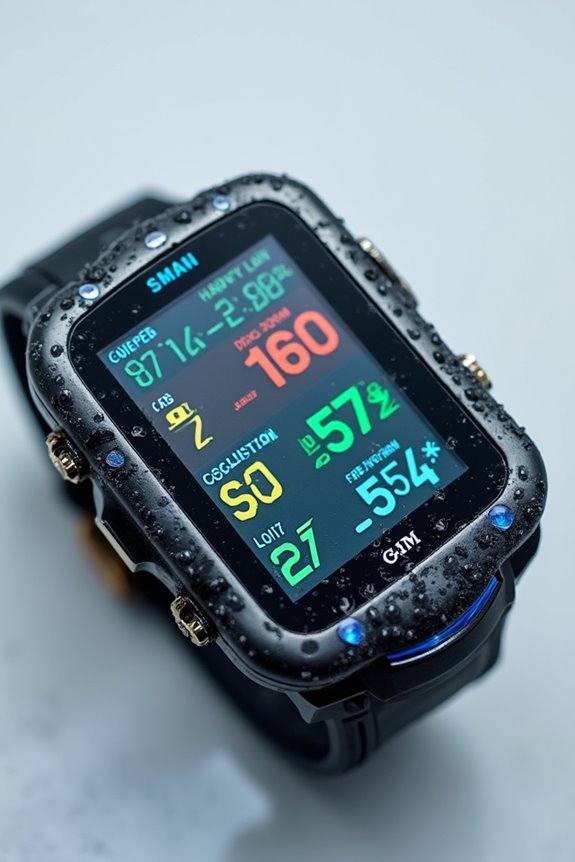
Because our bodies aren’t just bags of water, the way inert gases behave inside us during a dive is pretty fascinating—and essential for staying safe. Inside, different tissue compartments act like little gas sponges, each absorbing and releasing inert gas at its own pace—thanks to unique gas kinetics and saturation dynamics. Some tissues soak up gas fast; others take their sweet time. This variation helps our dive computers calculate safe ascent profiles by modeling these compartments independently, avoiding dangerous supersaturation that causes bubbles. Ever heard of M-values? They set the limits for how much inert gas a tissue can hold safely. So, tissue compartments, gas kinetics, and clever algorithms team up to keep decompression smooth—because nobody wants “bubble trouble” while enjoying the underwater views.
Managing No Decompression Limits During a Dive
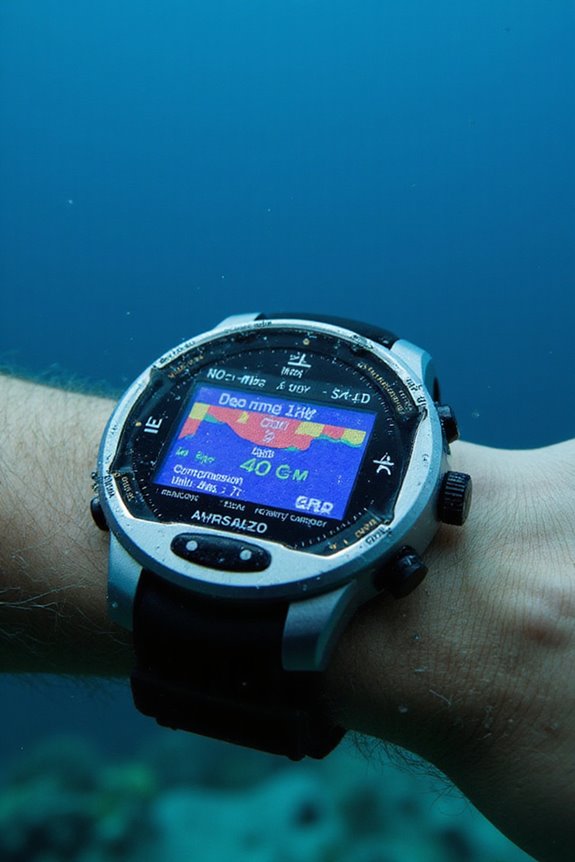
As we plunge deeper or linger longer underwater, keeping an eye on our No Decompression Limit (NDL) becomes essential—it’s basically the clock ticking down on how long we can stay at a certain depth without needing those dreaded decompression stops. NDL management isn’t just about watching numbers; it’s about smart ascent strategies too. Our dive computers are like loyal buddies, buzzing alerts as we near the limit, reminding us to start thinking about heading up. Ever wonder why those safety stops at 15 feet exist? They help us offgas nitrogen safely without turning the dive into a decompression mission. By respecting NDL and planning our ascent carefully, we stick together in safe diving territory, keeping DCS worries at bay while enjoying the underwater world a little longer.
Planning Decompression Dives and Gas Switching Strategies
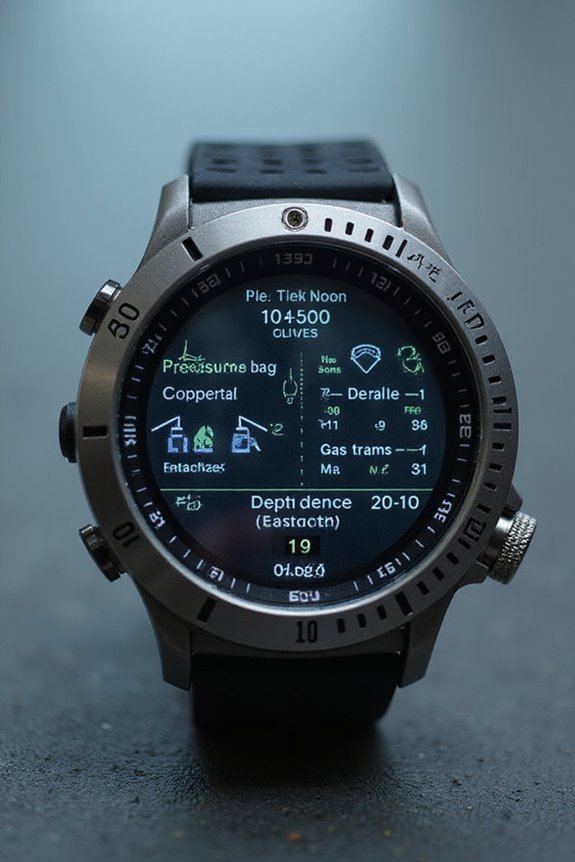
Now that we’ve got a handle on managing No Decompression Limits, it’s time to chat about what happens when our underwater adventure calls for decompression stops and some smart gas switching. In decompression planning, we carefully schedule ascent rates and stops to safely purge inert gases—no one wants the bends, right? Using dive computers, we map out where to pause and which gases to breathe, often switching to oxygen-rich mixes that speed up off-gassing. Gas management gets interesting as we juggle different tanks—trimix for deep parts and enriched oxygen for stops—making sure each gas is used only within safe depths to avoid oxygen toxicity or hypoxia. Proper gas switching not only shortens decompression time but also helps us dive smarter, safer, and with fewer worries bubbling up!
Monitoring Safety Parameters Beyond Decompression
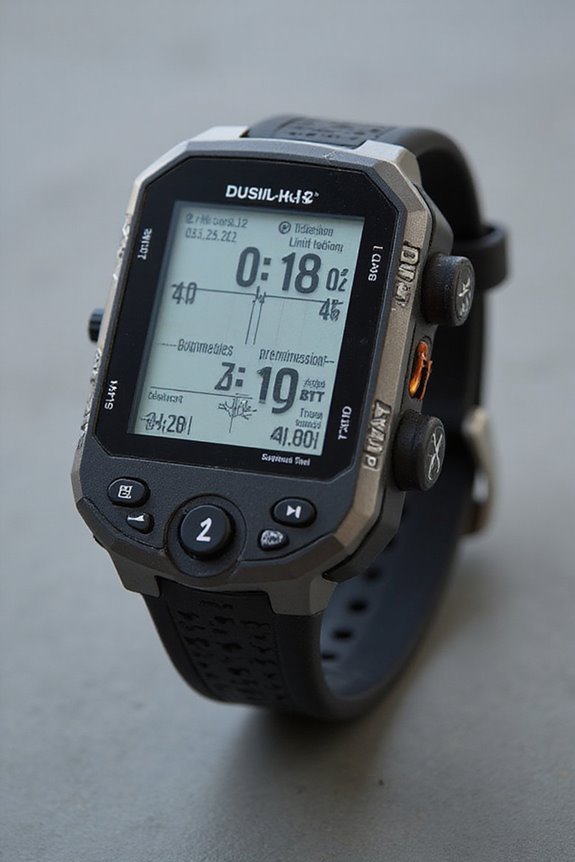
While keeping an eye on our decompression obligations is essential, there’s a lot more our dive computers are quietly watching over to keep us safe beneath the waves. Ever wonder how they handle individual variability, like differences in fitness or hydration? These devices take that into account to fine-tune safety margins, helping all of us dive smarter. Plus, environmental factors such as water temperature and salinity impact how our bodies absorb gases, and dive computers monitor these in real-time. They also keep an eye on our ascent rate to avoid that dreaded “too fast” alarm buzzing in our ears. By tracking these various safety parameters beyond decompression alone, our dive computers act like a vigilant dive buddy—always alert and ready to nudge us back on track. Pretty neat, right?
Choosing the Right Algorithm for Your Diving Style
Ever wonder why your dive computer doesn’t just use one decompression algorithm for everyone? Well, it turns out that algorithm effectiveness really depends on your diving style and preferences. For example, recreational divers often prefer algorithms like Pelagic Z+ or Recreational RGBM, which offer longer no-decompression limits with moderate conservatism. On the other hand, technical divers might benefit from more precise models like Suunto’s Fused RGBM, designed for deep, complex dives. Plus, some algorithms let us adjust conservatism based on user preferences like age or exertion, making the experience more personal. So, choosing the right algorithm isn’t about picking the fanciest one—it’s about finding what fits you, and helps keep you safer underwater, without turning your exploration into a slow-motion slog. Makes sense, right?
Frequently Asked Questions
How Do Dive Computers Handle Altitude Diving and Pressure Changes on Land?
We rely on dive computers’ altitude adjustments and pressure compensation to keep us safe when diving at elevation. They automatically recalibrate nitrogen load and dive profiles, so together we dive confidently despite changing conditions on land.
Can Dive Computers Be Used Safely for Freediving or Apnea Dives?
You might wonder if dive computers suit freediving safety, and we’ve found they can, but only with apnea-specific features. Let’s embrace tech that enhances apnea techniques, helping us dive safer and stronger together.
How Often Should Dive Computer Firmware Be Updated for Optimal Performance?
We recommend updating your dive computer’s firmware regularly whenever notifications appear. Firmware updates guarantee peak performance by adding features and fixing bugs, so staying current keeps our diving experiences safer and more reliable together.
What Are Common Troubleshooting Steps if a Dive Computer Malfunctions Underwater?
When a dive computer malfunctions underwater, it feels like losing our compass in a storm. Let’s check for battery issues, verify sensor calibration, abort the dive if needed, and rely on backup gauges to stay safe together.
How Do Environmental Factors Like Temperature Affect Dive Computer Readings?
It is understood that temperature calibration is key since environmental adjustments affect dive computer readings. Together, we can guarantee accurate data by regularly calibrating our devices, embracing the challenges, and diving confidently with reliable temperature info.

